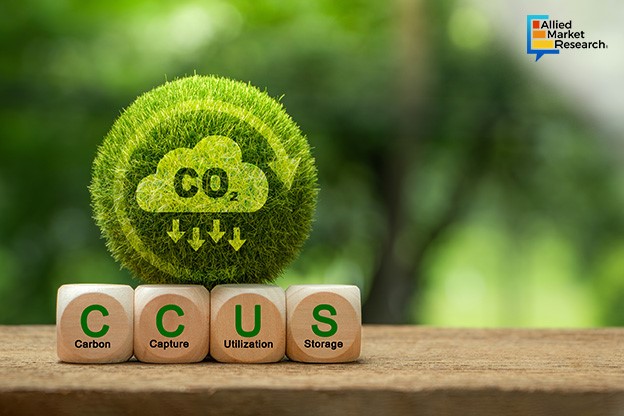How Can Carbon Capture, Utilization, and Storage (CCUS) Technologies Help Countries Shift to a Green Economy?

24 Mar
2025
Key takeaways:
- Introduction
- Reasons behind the rising popularity of CCUS technologies
- Strategic alliances between leading companies
Ever since countries declared their net-zero targets as part of the Paris Climate Agreement of 2015, governments and private companies have invested hugely in technologies that reduce the carbon footprint of their operations and bring down the pace of climate change. The development of carbon capture, utilization, and storage (CCUS) technologies is an example of this trend. Carbon capture, utilization, and storage is a set of mechanisms that capture carbon emissions, including CO2 and CO, to either utilize them for certain meaningful applications or store them permanently in natural or artificial sequestration systems. Thus, CCUS acts as a direct solution to reduce the impact of carbon emissions on the Earth’s atmosphere.
Analyzing the contribution of CCUS technologies in achieving net-zero targets
An important factor that distinguishes carbon capture, utilization, and storage technology from other green energy initiatives is its ability to reduce carbon emissions at source. Many green technologies that seek to bring down the proportion of greenhouse gases in the atmosphere do not capture CO2 or CO emissions directly from industry or manufacturing processes. CCUS mechanisms, on the other hand, can be deployed in industries directly so that the emissions do not reach the atmosphere itself.
As per a study done by the International Energy Agency, CCUS technologies can help to reduce as much as 20% of the total CO2 emissions from energy production facilities, industries, and the power generation sector in general. Not just carbon emissions, but other harmful gases and toxic compounds, too, can be captured using this advanced technology. Recently, scientists from the Argonne National Laboratory published a research paper that showed that CCUS mechanisms could half the rate of NOx emissions from oxyfuel combustion and other such manufacturing processes if implemented properly.
Another important point of difference between CCUS and other green technologies is the creation of a parallel economy that is sustainable in nature. The ‘utilization’ aspect of CCUS systems helps in generating jobs that focus on developing materials from the captured carbon emissions. For example, carbon emissions stored through CCUS are generally used to manufacture bricks. Thus, as the adoption of these mechanisms grows globally, brick production facilities are expected to hire new workers to address the demands of the industry.
According to an estimate put forth by the International Energy Agency, carbon capture, utilization, and storage systems can create up to 100,000 construction jobs by 2050. Another study published by the New Climate Economy states that green initiatives like carbon capture can increase the global GDP by around $25 trillion by 2030. Thus, in the long run, apart from environmental advantages, CCUS technologies can benefit economically also.
BASF and Enerflex announce collaboration to capitalize on the opportunities in the industry
The carbon capture, utilization, and storage (CCUS) industry is a highly dynamic one with several multinational giants competing for dominance. As part of this competition, many companies are partnering with their peers to gain a lead in the landscape. For instance, in June 2024, BASF, a chemical manufacturing company, announced that it had signed a memorandum of understanding with Enerflex, an energy infrastructure solutions provider. Under the partnership, both companies have agreed to pool their resources and expertise to develop novel CCUS solutions and applications. As part of this collaboration, Enerflex is expected to develop gas processing and compression systems powered by BASF’s OASE® blue technology that will help in efficient carbon capture and utilization.
Such well-planned alliances are predicted to broaden the scope of the landscape globally. The North America region is anticipated to be the most lucrative segment owing to the growing use of CO2 for enhanced oil recovery operations. Furthermore, the US government recently enacted the FUTURE Act which provides industries with incentives to capture carbon dioxide from industrial processes and use it for oil recovery. Such favorable policies are expected to boost the landscape in the coming period.
Wrapping up, the carbon capture, utilization, and storage industry is estimated to grow immensely in the near future on account of the increasing shift of governments and private companies toward green initiatives. Furthermore, the advantages offered by CCUS mechanisms have increased their popularity in recent times. The partnerships and other alliances formed by leading companies are also anticipated to play a part in creating new avenues of growth in the landscape.
For recommendations and tips on how to capitalize on the opportunities offered by the sector, feel free to contact us.

Akhilesh Prabhugaonkar
Author's Bio- Akhilesh Prabhugaonkar holds a bachelor’s degree in Electronics Engineering from the reputed Vishwakarma Institute of Technology. He has a special interest in the fields of forensics, world history, international relations and foreign policy, sports, agriculture, astronomy, security, and oceanography. An ardent bibliophile and melophile, Akhilesh loves to write on topics of his interest and various other societal issues. This love for writing made him enter the professional world of content writing and pursue his career in this direction.
Avenue: Entire Library membership of Allied Market Research Reports at your disposal
- Avenue is an innovative subscription-based online report database.
- Avail an online access to the entire library of syndicated reports on more than 2,000 niche industries and company profiles on more than 12,000 firms across 11 domains.
- A cost-effective model tailored for entrepreneurs, investors, and students & researchers at universities.
- Request customizations, suggest new reports, and avail analyst support as per your requirements.
- Get an access to the library of reports at any time from any device and anywhere.
Related Post
-
How are Submarine Cables Transforming Global Connectivity with Enhanced User Experience?
-
Endoscopy Procedures: Transformations in Techniques and Applications
-
AI-Powered Video Analytics: How the Product Actually Works for enterprises
-
Painting Robots: Transforming Precision Coating and Creative Applications
-
Innovations in Pharmacovigilance Systems Advancing Patient Safety
-
Understanding Edge Security: Keeping Data Safe Near the Source
-
Exploring the Use and Advancements of 3D Laser Scanners in Professional Applications
-
Reinforcing Industrial Controls with Smarter Tools and Training








